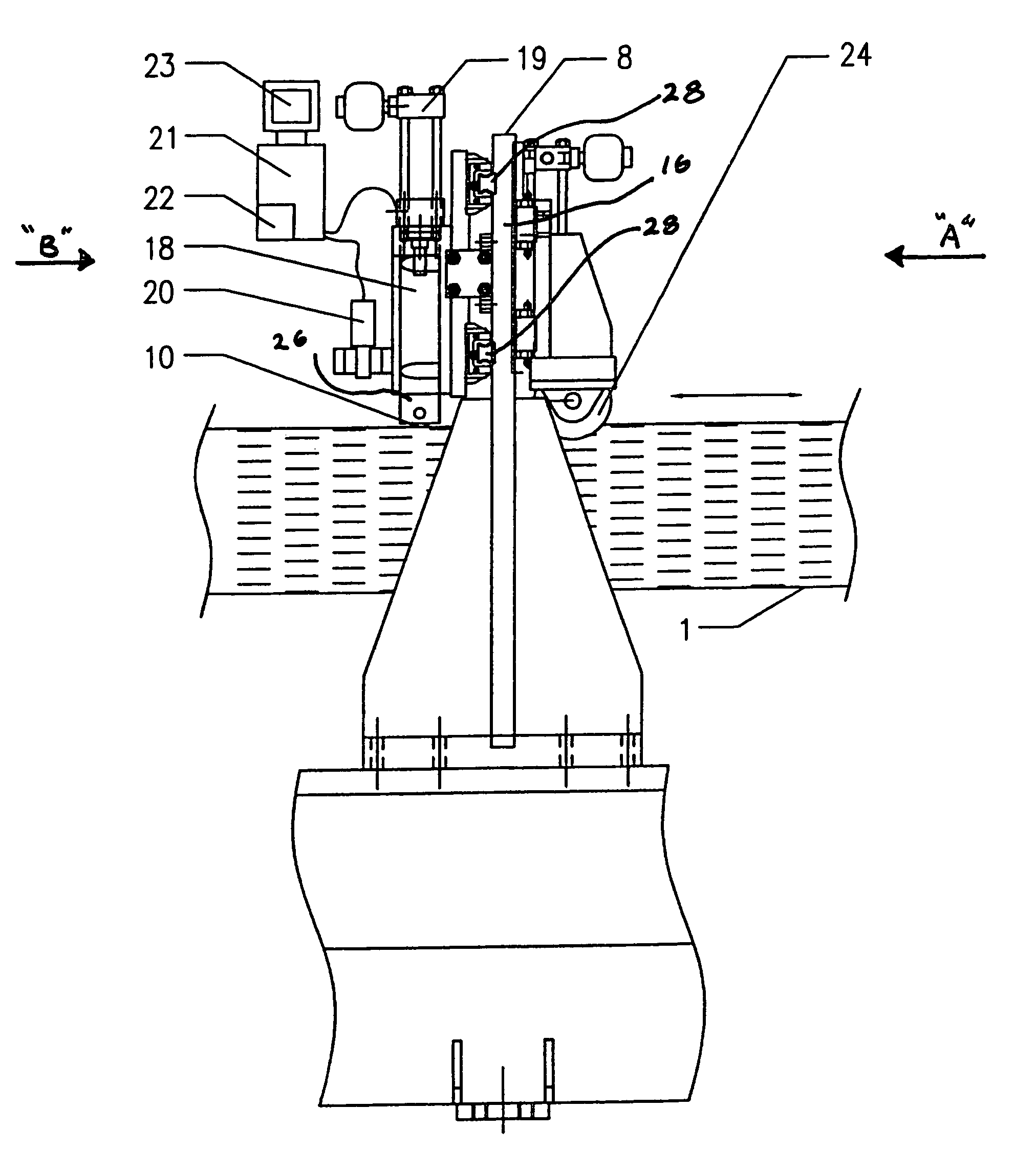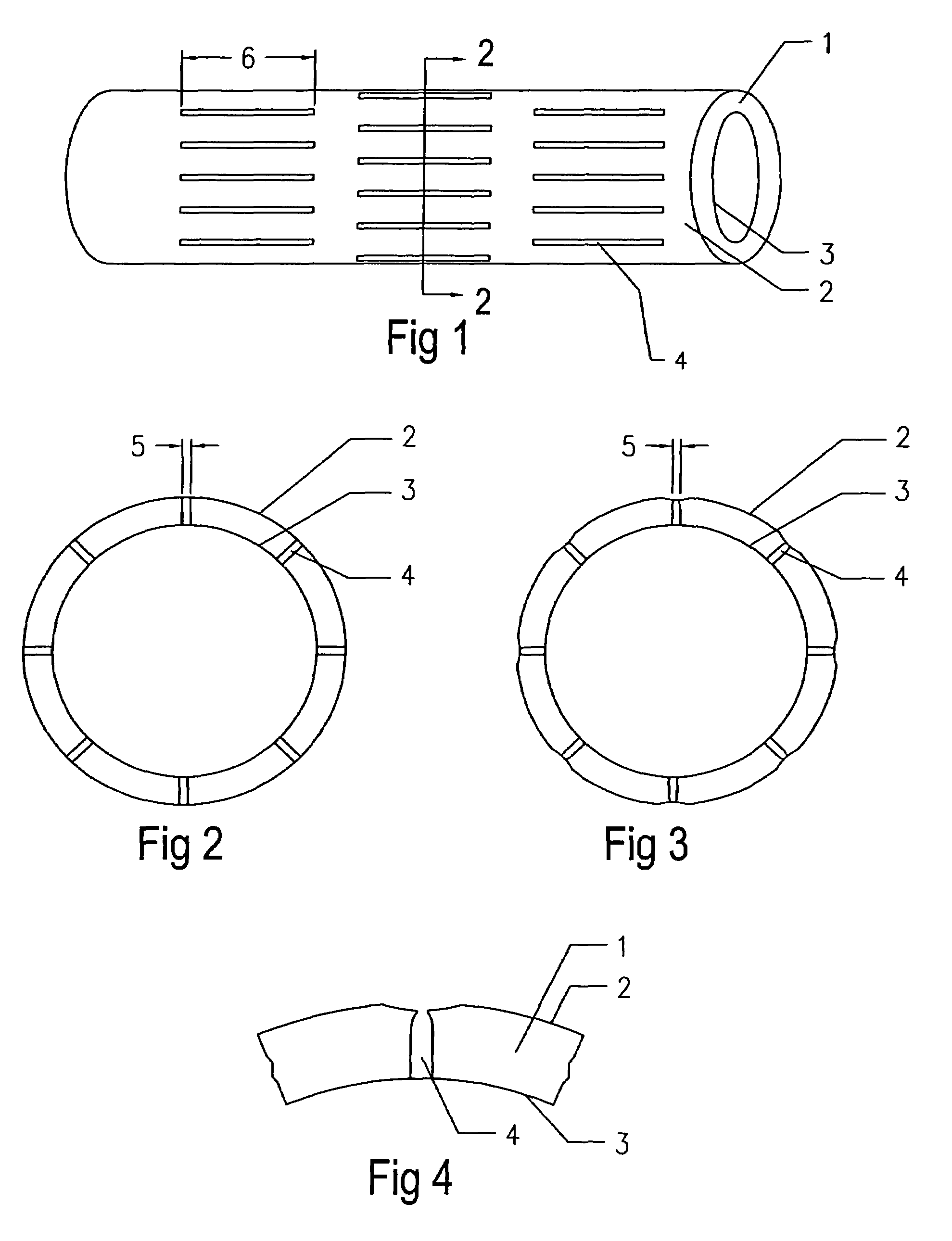Method and apparatus to reduce the width of a slot or opening in a pipe, tube or other object
a technology of slot or opening and pipe, which is applied in the direction of rolling mill control devices, manufacturing tools, metal rolling arrangements, etc., can solve the problems of inability to cut slots in tubulars in conventional manufacturing equipment, suffer from a number of inherent limitations, and the difficulty of slotting tubulars is not so much in their use but in their method of manufacturing, so as to reduce the width of the slot or opening, facilitate the alignment of seaming equipment, and reduce the effect of slot width
- Summary
- Abstract
- Description
- Claims
- Application Information
AI Technical Summary
Benefits of technology
Problems solved by technology
Method used
Image
Examples
Embodiment Construction
[0022]The present invention may be embodied in a number of different forms. However, the specification and drawings that follow describe and disclose only some of the specific forms of the invention and are not intended to limit the scope of the invention as defined in the claims that follow.
[0023]It should be noted that the invention described herein may be practiced in association with a wide variety of different types, shapes and sizes of objects or products having slots, holes or openings within their outer surfaces. For illustration purposes the specific embodiments of the invention that are described below concern the use of the invention in connection with a slotted pipe or tubular member. Accordingly, pursuant to one of the preferred embodiments of the invention there is provided a pipe, tube, or tubular element 1 having an outer surface 2 and an inner surface 3 (see FIG. 1). Spaced about the outer surface of tubular member 1 is a series of slots or openings 4, having a widt...
PUM
| Property | Measurement | Unit |
|---|---|---|
| width | aaaaa | aaaaa |
| diameters | aaaaa | aaaaa |
| width | aaaaa | aaaaa |
Abstract
Description
Claims
Application Information
 Login to View More
Login to View More - R&D
- Intellectual Property
- Life Sciences
- Materials
- Tech Scout
- Unparalleled Data Quality
- Higher Quality Content
- 60% Fewer Hallucinations
Browse by: Latest US Patents, China's latest patents, Technical Efficacy Thesaurus, Application Domain, Technology Topic, Popular Technical Reports.
© 2025 PatSnap. All rights reserved.Legal|Privacy policy|Modern Slavery Act Transparency Statement|Sitemap|About US| Contact US: help@patsnap.com



